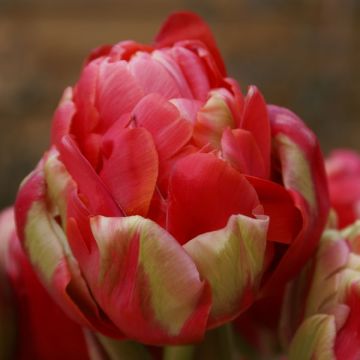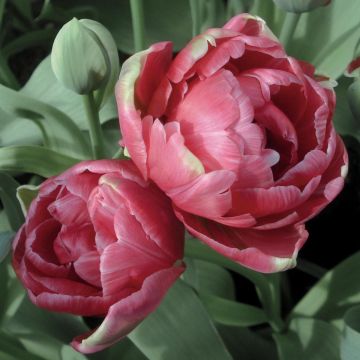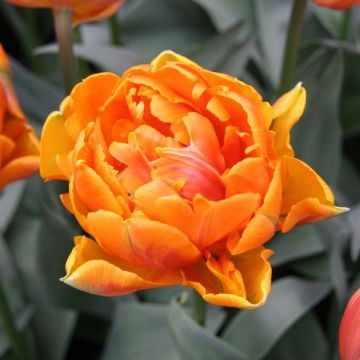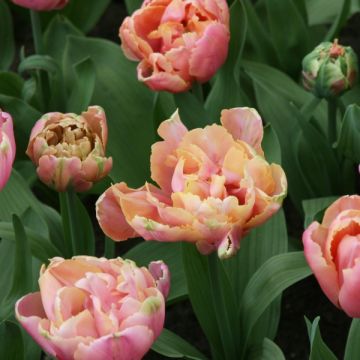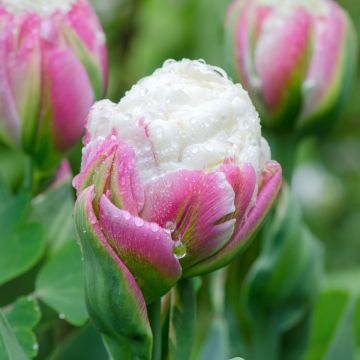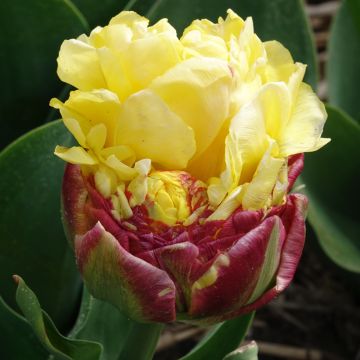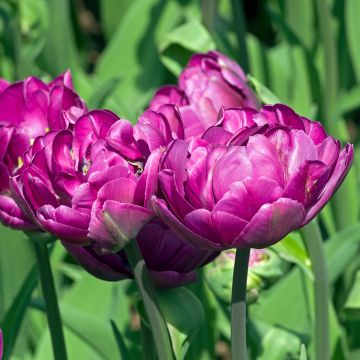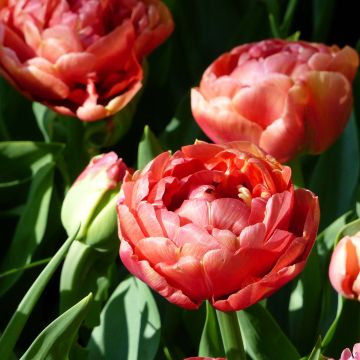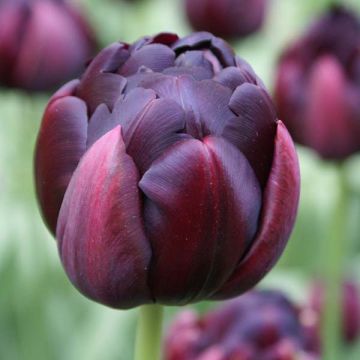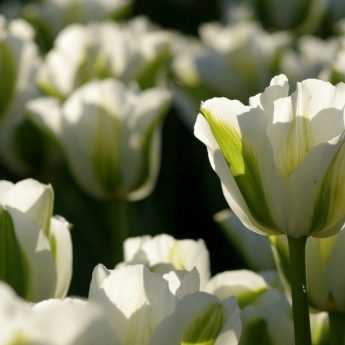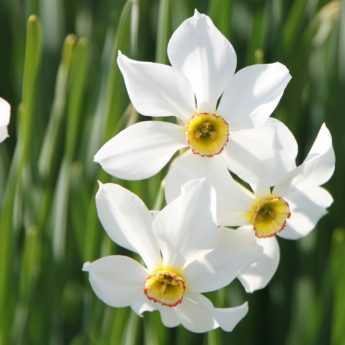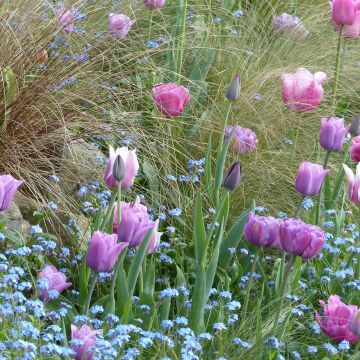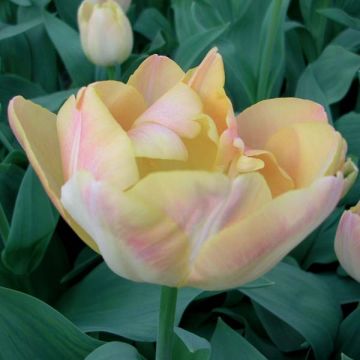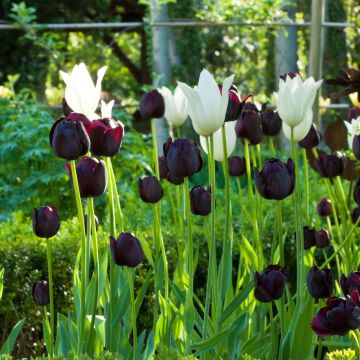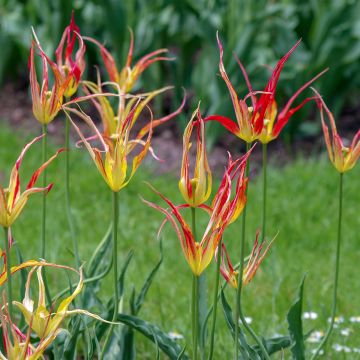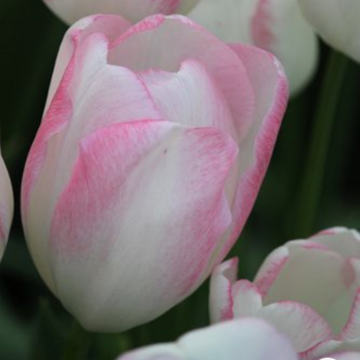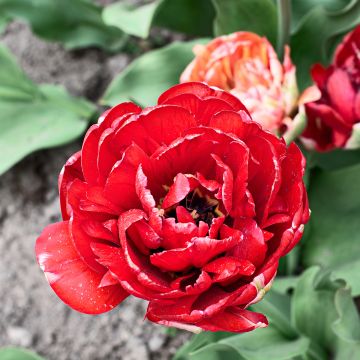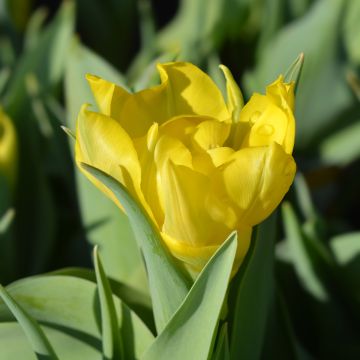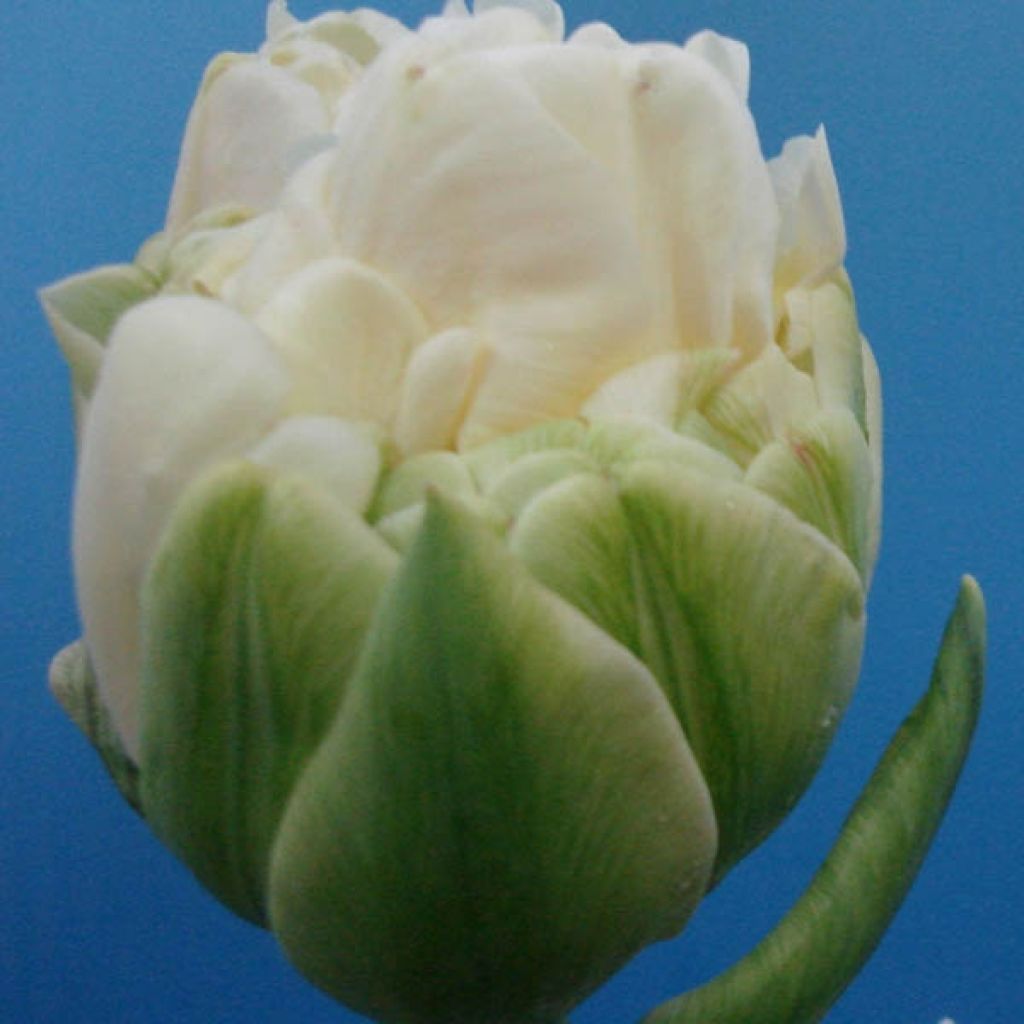

Tulipe Double White Wow
Tulipa White Wow - Tulipe Groupe Double tardive
Tulipa White Wow
Nothing to report
Carole, 27/10/2014
Why not try an alternative variety in stock?
View all →This plant carries a 6 months recovery warranty
More information
We guarantee the quality of our plants for a full growing cycle, and will replace at our expense any plant that fails to recover under normal climatic and planting conditions.
Would this plant suit my garden?
Set up your Plantfit profile →
Description
The Double Late Tulip 'White Wow' is a remarkable variety reminiscent of peonies with its tightly clustered petals, prized for its compact, cone-shaped pure white flowers edged with green-tinted petals. Its low-growing habit, with sturdy stems reaching 25 cm at maturity, makes it an ideal candidate for container cultivation or the front of flower beds. It prefers sunny or lightly shaded positions and rich, well-drained soil. Its late flowering, typically in May, elegantly extends the tulip season, provided excess moisture is avoided to prevent rot in its compact bulbs.
The Double Late Tulip 'White Wow' belongs to the Liliaceae family and is classified in the Double Late Group. A recent horticultural cultivar, this type of tulip descends from wild species native to Southern Europe and Central Asia, with Tulipa gesneriana serving as the foundation for various hybridizations aimed at producing double blooms in late spring. Its habit is compact, reaching around 25 cm in open ground, with robust yet short stems perfectly suited to pots or the front of borders. Growth is rapid in spring: within weeks of autumn planting, the plant reaches its full size. Unlike natural species, 'White Wow' does not produce visible offsets, though bulblets may appear after several growing seasons. The flowers are tightly cone-shaped, composed of a core of pure white petals surrounded by an outer ring tinged with green, measuring approximately 7–9 cm in diameter. They bloom late, from late April to early May. The foliage is deciduous, consisting of 4 to 6 broad, lanceolate, medium-green leaves measuring 12–18 cm, which die back after flowering. The stems are fleshy and sturdy. The root system is typical of tulips: a globose bulb of 5–6 cm, with concentric scales and initially taprooted then fasciculate roots during growth.
Planted in rhythmic clusters at the front of a spring border or grouped in containers on a terrace, the 'White Wow' tulip exudes elegance with an almost Japanese restraint. Its immaculate white blooms, accentuated with green, harmonise beautifully with the soft foliage of lady’s mantle, the pastel hues of double daffodils, or the delicate inflorescences of forget-me-nots. To create a scene of subtle refinement, it pairs wonderfully with the similarly accented 'Spring Green' tulip, the creamy pink sophistication of 'Danceline', or the 'Exotic Emperor' tulip for a textured interplay of whites. When cut, the unique blooms make striking bouquets.
Report an error about the product description
Plant habit
Flowering
Foliage
Botanical data
Tulipa
White Wow
Liliaceae
Tulipa Double Late White Wow
Cultivar or hybrid
Planting and care
For optimal spring flowering, plant the 'White Wow' tulip in a sunny spot from October to December. It can also be placed in a partially shaded location. Plant the bulbs as soon as possible in light, fertile, well-drained soil, loosened to a depth of 15 cm (cover the bulbs with twice their height of soil). Space the bulbs 10 cm apart, ensuring they do not touch to create a mass effect; cut the flower stems after flowering. Allow the leaves to dry completely before cutting them.
Planting period
Intended location
Care
Planting & care advice
-
, onOrder confirmed
Reply from on Promesse de fleurs
Similar products
Haven't found what you were looking for?
Hardiness is the lowest winter temperature a plant can endure without suffering serious damage or even dying. However, hardiness is affected by location (a sheltered area, such as a patio), protection (winter cover) and soil type (hardiness is improved by well-drained soil).

Photo Sharing Terms & Conditions
In order to encourage gardeners to interact and share their experiences, Promesse de fleurs offers various media enabling content to be uploaded onto its Site - in particular via the ‘Photo sharing’ module.
The User agrees to refrain from:
- Posting any content that is illegal, prejudicial, insulting, racist, inciteful to hatred, revisionist, contrary to public decency, that infringes on privacy or on the privacy rights of third parties, in particular the publicity rights of persons and goods, intellectual property rights, or the right to privacy.
- Submitting content on behalf of a third party;
- Impersonate the identity of a third party and/or publish any personal information about a third party;
In general, the User undertakes to refrain from any unethical behaviour.
All Content (in particular text, comments, files, images, photos, videos, creative works, etc.), which may be subject to property or intellectual property rights, image or other private rights, shall remain the property of the User, subject to the limited rights granted by the terms of the licence granted by Promesse de fleurs as stated below. Users are at liberty to publish or not to publish such Content on the Site, notably via the ‘Photo Sharing’ facility, and accept that this Content shall be made public and freely accessible, notably on the Internet.
Users further acknowledge, undertake to have ,and guarantee that they hold all necessary rights and permissions to publish such material on the Site, in particular with regard to the legislation in force pertaining to any privacy, property, intellectual property, image, or contractual rights, or rights of any other nature. By publishing such Content on the Site, Users acknowledge accepting full liability as publishers of the Content within the meaning of the law, and grant Promesse de fleurs, free of charge, an inclusive, worldwide licence for the said Content for the entire duration of its publication, including all reproduction, representation, up/downloading, displaying, performing, transmission, and storage rights.
Users also grant permission for their name to be linked to the Content and accept that this link may not always be made available.
By engaging in posting material, Users consent to their Content becoming automatically accessible on the Internet, in particular on other sites and/or blogs and/or web pages of the Promesse de fleurs site, including in particular social pages and the Promesse de fleurs catalogue.
Users may secure the removal of entrusted content free of charge by issuing a simple request via our contact form.
The flowering period indicated on our website applies to countries and regions located in USDA zone 8 (France, the United Kingdom, Ireland, the Netherlands, etc.)
It will vary according to where you live:
- In zones 9 to 10 (Italy, Spain, Greece, etc.), flowering will occur about 2 to 4 weeks earlier.
- In zones 6 to 7 (Germany, Poland, Slovenia, and lower mountainous regions), flowering will be delayed by 2 to 3 weeks.
- In zone 5 (Central Europe, Scandinavia), blooming will be delayed by 3 to 5 weeks.
In temperate climates, pruning of spring-flowering shrubs (forsythia, spireas, etc.) should be done just after flowering.
Pruning of summer-flowering shrubs (Indian Lilac, Perovskia, etc.) can be done in winter or spring.
In cold regions as well as with frost-sensitive plants, avoid pruning too early when severe frosts may still occur.
The planting period indicated on our website applies to countries and regions located in USDA zone 8 (France, United Kingdom, Ireland, Netherlands).
It will vary according to where you live:
- In Mediterranean zones (Marseille, Madrid, Milan, etc.), autumn and winter are the best planting periods.
- In continental zones (Strasbourg, Munich, Vienna, etc.), delay planting by 2 to 3 weeks in spring and bring it forward by 2 to 4 weeks in autumn.
- In mountainous regions (the Alps, Pyrenees, Carpathians, etc.), it is best to plant in late spring (May-June) or late summer (August-September).
The harvesting period indicated on our website applies to countries and regions in USDA zone 8 (France, England, Ireland, the Netherlands).
In colder areas (Scandinavia, Poland, Austria...) fruit and vegetable harvests are likely to be delayed by 3-4 weeks.
In warmer areas (Italy, Spain, Greece, etc.), harvesting will probably take place earlier, depending on weather conditions.
The sowing periods indicated on our website apply to countries and regions within USDA Zone 8 (France, UK, Ireland, Netherlands).
In colder areas (Scandinavia, Poland, Austria...), delay any outdoor sowing by 3-4 weeks, or sow under glass.
In warmer climes (Italy, Spain, Greece, etc.), bring outdoor sowing forward by a few weeks.


































